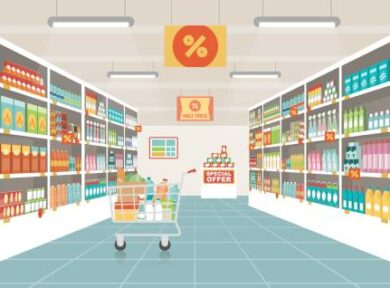Stop Trying to Find Motivation and Do this Instead How the Cereal Aisle Can Make You Leaner, Healthier, Happier (5 min read or 30s read if you jump to the summary at the end) Are you familiar with choice architecture? It’s the idea that location of a cue within an environment dramatically impacts decisions and can be the catalyst for an action or behavior. For example, it’s the method employed by cereal manufacturers who know that people buy more products that are located at eye level than the ones down by your ankle. So, grocery stores put the higher profit margin cereals at eye level. Sure, as the consumer within the store, you still have free choice. But the evidence is robust, we are all swayed by the location of different cues within our environment. Psychology and the grocery stores both know that: Environment shapes behavior. And that’s a powerful notion. At least powerful enough that companies have taken notice of it and seen it directly impact their profits. So how can you apply this to yourself? As James Clear says in his book Atomic Habits: “Motivation is overrated. Environment often matters more.” If we properly apply this idea, we can make implementing behavior change much easier. In psychology, this process consists of the following sequence: antecedent – > stimulus – > response The antecedent is the thing or event that existed before that sets the stage. The stimulus is any energy change that activates a sense organ. The response is any clearly defined, measurable physical reaction. If we use the real-world previous cereal example, it looks like this: antecedent = the high profit margin cereal on the eye level shelf stimulus = the shopper sees the cereal response = the shopper grabs a box and puts it in their cart This simplified model gives us insight into a path to success. If we shape the antecedent, we can shift the stimulus and the response to better support our goals. After all, it is often true that you know what you need to do to achieve your goals. If you want to lose weight, you need to establish a smart caloric deficit. If you want to be more fit, you need to engage in regular activity. If you want to be healthier, you need adequate recovery and sleep. But knowing these ideas is usually not enough to see those very behaviors get executed consistently. It’s not a question of what. You often know what to do. Maybe it’s more a question of where to start. If we use choice architecture to our advantage, we could shape the where (the antecedent) to make the likelihood of the what happen far more consistently. And you can do this through purposefully environmental design – making your surroundings an asset to us instead of falling victim to them. Let’s walk through a few examples. Let’s say an individual was trying to limit their wine intake to one glass per night. They could open the bottle, pour a glass, recork the bottle and place it on the countertop. They could then use good ole’ willpower to avoid the temptation of pouring another glass. This is not setting the situation up for success. A better option would be to pour the glass, recork the bottle, and then place the bottle in a cabinet out of sight. This removes it from the immediately observable environment and keeps it from being a stimulus to pour another glass. With that done, the game is already half won. But this technique isn’t limited to avoiding certain behaviors like overconsuming wine. It can be used to encourage healthier behaviors. For a second example let’s say the goal is to exercise three times per week after work. If the athletic shoes and duffle containing the workout attire are buried in the back of the walk-in closet, it’s highly unlikely that those will be an effective antecedent to stimulate the behavior of going to exercise. If instead the workout gear was put in a conspicuous spot, say right in the middle of the hallway by the front door, it becomes a far more impactful antecedent. If you have to step over it every day after you come home from work, then the environment is definitely set up to cue the appropriate behavior. Shaping the antecedents within your world will dramatically impact the behaviors that get consistently executed. And remember that just like in the grocery store, you always have free choice. You don’t have to buy the cereal. You don’t have to deny yourself another pour. You don’t have to lace up the athletic shoes. But setting up the environment to cue the behaviors you want to see will dramatically impact consistency and results. So, what proverbial cereal do you want to encourage yourself to purchase? Make those options more conspicuous, make other options less obvious, and see more of the desired behavior. Although there are a multitude of ways to shape behavior, shaping the environment is a powerful tool you can use for your benefit. To sum it up…The Summary: Our immediate environments provide antecedents that stimulate behaviors (responses). Fortunately, we can alter and shape our environments to encourage healthier behaviors. The more obviously available a choice is, the more likely it is to cue a behavior. This fact can support or derail a person’s goals based on how they’ve structured their environment. One sentence takeaway: Environment is the invisible hand that shapes behavior. 
200 East Southampton Drive (Lower Level), Columbia, Missouri 65203
